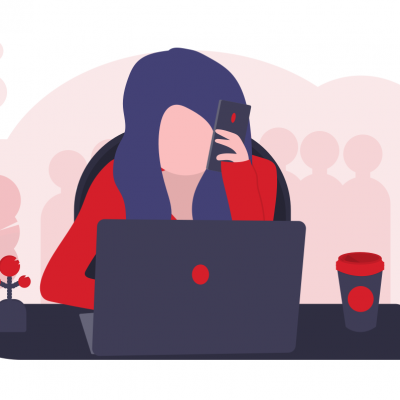Smart Working without practice
#stayathome
To the right is the kitchen, and I have the couch behind me. My office is the dining table; it offers more space than my desk at Restart, but the chair without wheels makes the home office a bit static. Thanks to chat, I can talk to my colleagues, but having coffee alone is odd.
It’s my second day of remote working and I haven’t yet decided if I like it or not. It doesn’t matter much because, with President Conte’s decree on Monday, March 9, it was our responsibility to switch all workers whose jobs allowed it to remote working.
Thus, the Software office at Restart has moved into a house in Navacchio, an apartment not far from Pisa airport, a house just steps from the Livorno seafront, and about a half dozen other homes. The communications office has moved to a small village in the hills, and the empty places at the company are increasing.
Restart wanted to respond concretely to the institutions’ #stayathome appeal from the beginning. With our corporate IT department, we managed, in just over eight hours, to implement a system that allowed us to work from home. Colleagues made their personal PCs available to make the transition smoother, and the experiment can be considered successful for now. Thanks to timely organization, we are 100% operational, operational and smart.
Going to the office for us Italians, and not least for us at Restart, is kind of a ritual: we get ready in the morning, some of us drive 40 or 50 minutes, and we arrive at the office where we meet those colleagues with whom we are used to sharing a more than considerable amount of our time. We work together, in open spaces, have meetings, discuss, the young learn and the less young too. We meet clients, suppliers, brilliant and not so brilliant people who constantly present us with new challenges. Then there’s the coffee, the pastries for birthdays and important events, the lunch break where we sit down together.
With remote working, a lot of these things are different: you can wake up a bit later (because you save travel time to the office), you set up your station in the kitchen, living room, or study (for the lucky ones who have one), and then you start working. After a few hours, it becomes normal to chat with colleagues and even to video call them. The video call, for those unaccustomed to it, can initially be perceived as hostile. The webcam hides no secrets: there you are, full screen with your face and all the details of the room behind you. Sure, at first it’s a bit traumatic: but what change isn’t? It’s just a matter of two or three calls and the discomfort passes and indeed, you start to reevaluate that magical tool that allows you to have a colleague in your kitchen even when they are miles away.
And for some, even in remote working, the office is shared. In such a special moment as the one we are experiencing, it’s not hard for the same home to have two people working remotely, and maybe even one or two children forced home by the closure of the kindergarten. And so, you not only have a desk mate and a playroom in the living room, but that companion talks about things that have absolutely nothing to do with your job. Then you have to wield all those concentration skills that the open space office taught you, and thank heavens you have them.
As I said, it’s my second day of remote working and I haven’t yet decided if I like it or not. One thing is certain: in this emergency moment where our health and that of those around us is potentially in danger, it is a very precious tool.
And then at the basis of every progress, there’s always a bit of change.

